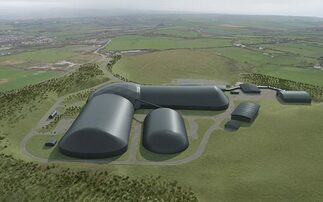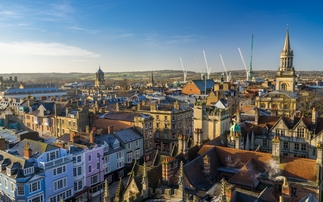National Grid's Nicola Shaw reveals some of the secrets of how the company - and the country - can maximise the huge opportunities that will come from the transition to net zero emissions
Climate change is the defining challenge of this generation. The decisions we take now will influence the future of our planet and life on earth. We know we have to change the way we live to curb harmful emissions and reach net zero by 2050.
We can't afford to stall or to wait. This decade alone, the industry must:
- Increase low carbon electricity generation by approximately 50 per cent from sources such as wind or solar power.
- Install low carbon heating systems in approximately 2.8 million homes.
- Develop carbon capture usage and storage (CCUS) technology and develop hydrogen networks.
- Install approximately 60,000 charging points to power nearly 11 million electric vehicles.
There is a lot of work to be done but it is encouraging to see viable technologies emerging, alongside political commitment and investment.
So where do we go now? Here are eight ways we think we can seize the net zero opportunity:
1. Championing ultra-fast electric vehicle charging points.
Our proposal for a network of ultra-fast chargers at UK motorway service stations would cut charge time to as little as five to 10 minutes - and with new petrol and diesel cars no longer on the market from 2035, we have to be prepared for the surge in electric vehicles (EVs). We are confident that a faster transition is possible, and we are suitably robust to cope with the forecast uptake in EVs. However, some targeted investment will be needed to ensure there are appropriate places where drivers can access sufficient high power charging away from home.
2. Looking at how we can green up gas.
Currently 85 per cent of homes and 40 per cent of the UK's power needs are supplied by gas. But as the UK works towards becoming one of the world's first net zero economies by 2050, the gas sector needs to demonstrate a viable pathway for decarbonisation. As part of the Future Gas Forum, with our industry partners, we're discussing ways to make keeping our homes warm more environmentally friendly. One of the key proposals here is a switch to hydrogen, which is cleaner than the methane predominantly used at present, but we need to be able to produce it at scale and adapt our current infrastructure. We're testing ways to safely transport hydrogen around the transmission network, for example with Project Cavendish, we are exploring ways we could produce, store or import hydrogen at the Isle of Grain in Kent, to get hydrogen to the South of London. Other projects are getting into the detail of how we might carry either hydrogen or a mix of hydrogen and methane around the gas transmission network. These projects are crucial if we are to deliver low carbon energy, reliably and safely to all consumers.
3. Set up a zero-carbon zone.
In partnership with Equinor and Drax, we're exploring the potential for a net-zero industrial cluster in the Humber region. The three companies are together committed to £800,000 of funding as part of a £2.6m project to plan out industrial decarbonisation on a grand scale. The Humber area is already home to Britain's largest industrial economy, employing 55,000 people and contributing £18bn towards UK GDP. Taking this workforce's significant skillset, rooted in activities such as refining, petrochemicals and manufacturing, and adding the right support and CCUS technology means Humber - and by default Britain - will lead the way in decarbonisation and regenerate the area.
4. Using robots to reduce gas leakage.
National Grid has been sending robots down high-pressure gas pipelines to carry out checks and repairs. This not only reduces maintenance costs, it also generates savings of more than 2,000 tonnes of carbon annually - equivalent to the emissions from 500 households.
5. Increasing offshore wind capabilities.
We have 10GW of offshore wind today, but that needs to jump to 75GW under net zero. Historically National Grid has had to connect wind farms to the grid one by one, similar to the spokes on a wheel. But now we need to plan not just for the next wind farm, but for the further 65GW required, developing long-term solutions to ensure we don't create bottlenecks and that we minimize disruption for coastal communities. The Government recently announced a review into offshore wind farms and National Grid fully supports this and we are playing our part - by assessing the costs and benefits of different coordinated network designs and technologies, we can drive innovation, harness the economic benefits and create highly skilled jobs.
6. Investing in low carbon innovation.
National Grid Partners, has backed a range of companies that are facilitating a lower carbon future. For example, AutoGrid is developing sophisticated technology to bring more renewable energy into the system and Carbon Lighthouse is helping building owners to cut energy waste and fight climate change.
7. Accessing more renewable energy than ever.
The days of most of Britain's energy coming from coal-fired power stations are over. One of the ways we can do this is through a network of interconnectors. These undersea cables enable smarter energy systems to react quickly to changes in supply and demand, ensuring renewable energy flows from where it is being generated in large quantities, to where it is needed most. Since 2014, over £3billion has been invested in 4.4GW of new interconnector capacity, which provides access to enough electricity to power 11 million homes. And with the potential to add a further 9.5 GW of interconnectors, we can deliver a smarter, more flexible future energy system.
8. Getting our own house in order.
At the heart of our business, our aim is to enable the transition to a clean and low carbon future. But we also need to look inwards and ensure we are doing the right thing. So in the UK, National Grid has committed to replace over 50 per cent of our internal fleet with alternative fuel vehicles by 2026, we're continuing to lead in developing alternatives to the insulating gas SF6, so that from 2026 we'll no longer install any new equipment that uses this greenhouse gas. We're also looking at lower carbon construction methods and have set a target of increasing the energy efficiency of our buildings by 10 per cent.
These are just some of the ways to seize that net zero opportunity now - there is lots of work to be done!
Nicola Shaw is UK Executive Director at National Grid. You can read more about National Grid's work to make a net zero future a reality for everyone here.
National Grid is a partner of the Net Zero Festival and lead partner of the Festival's soon to be announced Net Zero Skills Summit. You can register for the Net Zero Festival here and more details of the Net Zero Skills Summit will be unveiled soon.








